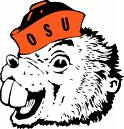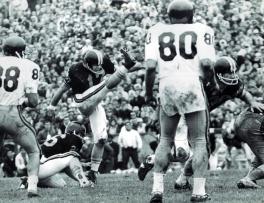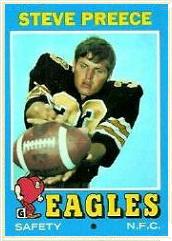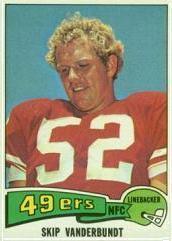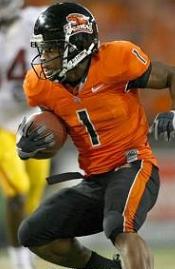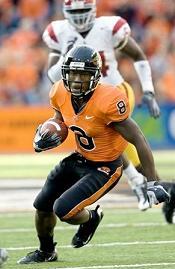The storied 1967 Oregon State football team was dubbed the "Giant Killers" by Los Angeles sportswriters during a span of 21 days when OSU defeated one #2-ranked team, tied the next #2 team, then blanked the top-rated team. The three opponents were led by Heisman talent—the '67 Trophy winner and both winner and runner-up in the '68 Heisman voting.
After winning its first three games of the 1967 campaign, OSU dropped back-to-back contests to Washington and BYU. Looming ahead on the schedule for Oregon State were #1 USC, #2 Purdue, and #3 UCLA. At 3-2, the Beavers weren't scaring anybody.
Purdue was the first Goliath. The 5-0 Boilermakers had earlier knocked Notre Dame from atop the national rankings, and whipped Ohio State, as well. Leading the charge for Purdue was junior Leroy Keyes, the do-it-all player who would finish second in the Heisman Trophy count his senior year. Making it even tougher, Oregon State had to travel to West Lafayette, Indiana, to play in front of a raucus Homecoming crowd of 60,000-plus. The Beavers were 19-point underdogs. OSU trailed 14-13 midway through the fourth quarter, but used two Purdue fumbles (one by Keyes) to emerge with a solid 22-14 victory.
Two weeks later, breezing past Washington State 35-7 during the interum, the Beavers traveled to Los Angeles to play the nation's new #2 team, UCLA. The Bruins were directed by Tommy Prothro, the former OSU head coach who had bolted for sunnier skies after guiding the Beavers to the Rose Bowl game three years earlier. UCLA's field general was talented quarterback Gary Beban, the soon-to-be Heisman Trophy winner. Again, the Beavers met the challenge against a #2 team on the road, mustering a 16-16 tie by virtue of Mike Haggard's 28-yard field goal with just over a minute remaining in the game. According to some sources, Oregon State actually outplayed the Bruins that day, but circumstances dictated a tie.
After the game, OSU head coach Dee Andros quipped, "We're tired of foolin' around with number two—bring on number one!" The "Great Pumpkin" (the moniker was derived from his rotund body draped in OSU orange attire) later clarified his remarks, explaining that momentary elation, not arrogance, provided the impetus for his enthusiasm. Nevertheless, it's a sure bet his statement was conspicuously posted on the locker room bulletin board of Oregon State's next opponent—undefeated, top-ranked Southern California.
The Beavers were surging, but USC was powerful. Southern Cal's offense was averaging slightly under 28 points per game, juiced by Orenthal James "O. J." Simpson, the nation's leading rusher, one year away from the Heisman Trophy. The game received some noteriety—OSU had garnered enough national attention due to the Purdue and UCLA games to be ranked #13. USC was an 11-point favorite over the Beavers, laden with sophomore and junior starters, like saavy quarterback Steve Preece, powerful fullback Bill "Earthquake" Enyart, and gritty center John Didion. Star linebacker Skip Vanderbundt was one of OSU's senior starters. At least Oregon State would face the Trojans on the familiar grass of Parker Stadium.
On a blustery November afternoon, a crowd of 41,494—the largest in stadium history—crammed Parker Stadium. Among the attendees were California Governor Ronald Reagan and Oregon Governor Tom McCall, who had earlier agreed to a friendly public bet. Due to traffic jams on the modest Willamette Valley roadways unable to accommodate the heavy vehicle flow, many seats remained empty until the game was well underway.
The OSU defense bent, but it didn't break. On Southern Cal's very first play from scrimmage, O. J. Simpson scampered 40 yards around the left end. He broke free again during the third quarter for another long gallop and was headed for an apparent touchdown when, in what is remembered by Oregon Staters as somewhat of a miraculous moment, Simpson was caught from behind by defensive lineman Jess Lewis in pursuit from across the field. The tackle, at the OSU 32-yard line, marked the game's last serious penetration by the Trojans into Oregon State territory. Simpson finished the day with 188 total rushing yards, but never reached the end zone.
OSU had a couple big gainers, too. During the second quarter, Bill Enyart blasted through the USC line for a 57-yard romp; in the fourth period, Charlie Olds fielded a punt on his 10-yard line and darted to the USC 35. Unfortunately for the home team, both runs ended in fumble turnovers. Neither team benefited from the pass—USC threw for only six total yards while the Beavers netted just eight!
Oregon State scored the only points of the game when Mike Haggard booted a 30-yard field goal as halftime approached. The slim three-point advantage somehow survived the second half. The Beavers had stunned the college football world by beating the unbeatable! As the season would play out, it was the only loss inflicted on the eventual national champs.
